Review: Motorola Droid Maxx 2 for Verizon Wireless
Editor's Note: The Maxx 2 runs the exact same version of Android as the Turbo 2, and includes the same apps/services from Verizon Wireless. Portions of the text below have been carried over from our review of the Turbo 2. Every aspect of the Maxx 2 was assessed fully and the text has been adjusted to reflect any differences.
Lock Screen
Motorola offers one of the most useful lock screens in the market. There are three basic settings. Moto Display shows important notifications as simple, interactive icons on the lock screen. Ambient Display wakes the screen regularly with a list of the current notifications in a more detailed way. Last, users can choose to leave the screen dark at all times.
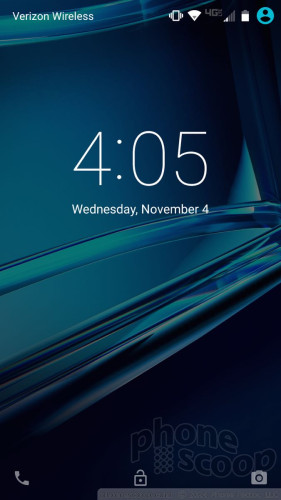
The big difference between Moto Display and Ambient Display is what you see on the lock screen. With Moto Display enabled, you'll see the Gmail logo when a new Gmail arrives, or the SMS logo when a new text arrives. That's all. With Ambient Display, you'll see the exact number of Gmails or text messages you have, and who the most recent one is from. Whichever you choose, the notifications arrive and repeat once and then go away. The clock is displayed whenever notifications arrive. The M2 is smart enough to keep the screen dark when it senses that the phone is in your pocket or purse, or face down.
As a slightly more affordable model, the Maxx 2 doesn't have the motion detectors available on the higher-end Turbo 2 and Moto X. That means you can't wake the screen by waving your hand over it. Bummer.
M2 owners can train the phone to wake at the sound of their voice. When it hears the catch phrase, the phone will turn on and obey commands when spoken to. For example, you can ask it to read incoming messages, send replies, and so on.
Pressing the screen lock button wakes the display to show the clock, wallpaper, and notifications. There are shortcuts to the phone and camera available on this screen.
Motorola is leading the field as far as lock screen notifications are concerned.
Home Screens
The Droid Maxx 2 ships with Android 5.1 Lollipop. Owners of the phone can customize the typical stuff, such as wallpapers, widgets, and so on. The M2 does not employ the Google Now launcher, and instead uses a simple home screen setup. The two active home screens and notification shade behave as expected for a Lollipop device.
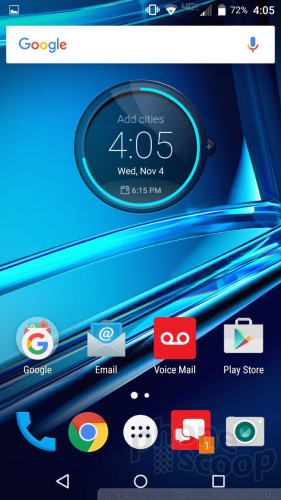
On a stock Android device, the application drawer is configured vertically with four app suggestions at the top. The M2 skips this in favor of a horizontal arrangement with no app suggestions. This means you swipe the app drawer from side-to-side rather than up and down. I like the vertical layout better. The settings menus look and behave exactly as other Lollipop handsets.
Thankfully, the M2 includes the Moto application. This tool bundles together a handful of functions. The Moto app controls Ambient Display / Moto Display. It also manages the Moto Assist function, which is used for changing Do Not Disturb settings based on location and calendar. Last, it can handle some gesture-based controls. For example, a quick turn of the wrist will launch the camera, and a quick shake of the phone will launch the camera and immediately fire off a photo.
As for performance, the M2 uses a 1.7GHz octa-core Snapdragon 615 processor with 2 GB of RAM. This is Qualcomm's mid-range processor. (The T2 has Qualcomm's high-end Snapdragon 810.) I found the M2 was plenty fast. I saw no problems during my tests of the handset, which was quick to open apps and transition between screens.
Camera
The M2 uses the same camera app found on the Moto X. It is a simple affair, but has some strengths.
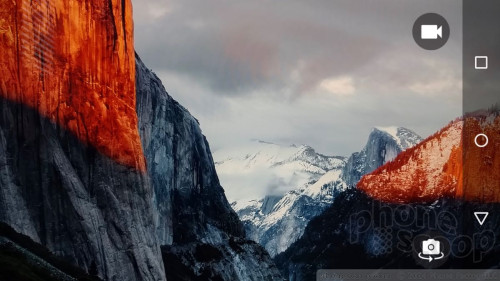
Without a dedicated camera button, I've come to rely on the wrist-twisting gesture that opens the M2's camera. This is the fastest way to launch the camera, but it takes some training to get used to. You may also open the camera from the lock screen or app shortcut.
There are only two buttons: one for the video camera and another for the user-facing camera. The other controls can only be accessed by swiping from the left side of the viewfinder towards the center.
The settings are arranged in a rotating dial. The M2 includes HDR, flash, touch-to-focus, and panorama features — plus some minor settings — all in this single dial. The HDR mode and flash can be set to on, off, or automatic. The remaining options can be set to on or off. These shooting modes and tools all behave as you'd expect them to.
The M2 has an always-on burst mode. Press the screen and hold, and the M2 will focus and then capture images continuously until you take your finger off the screen.
The camera app, in all its simplicity, does not let users adjust ISO, brightness, or white balance. Nor does the camera include filters or fancy shooting modes. It's a basic shooter, more in line with the features found in Apple's camera than those from LG and Samsung, which tend to cram functionality into their camera apps.
In terms of performance, the M2's camera is a hair slower than the T2's camera, but still quick enough. I didn't find myself frustrated with its speed. It opens swiftly, and focuses/captures images in short order.
Photos/Video
The M2 has the same 21-megapixel sensor as the T2 and Moto X and I'd say performance is the same (as it should be). The images are generally sharp and have accurate exposure and white balance. Not every images is perfect, but the vast majority are good enough given the conditions in which they were shot. I was particularly pleased with color accuracy. Low light performance was much better than past Motorola cameras, which were notoriously awful in poor lighting.
Most people can rely on the M2 as their main camera for general photography. Enthusiasts may still prefer dedicated equipment, but the M2 is certainly good enough for the masses. Moreover, the M2 compares favorably to other ~$400 handsets in Verizon's lineup (which are mostly last year's flagship phones).
The M2's front-facing camera captures 5-megapixel images and has a wide angle field of view. As with the main imager, I was pleased with the results. Shots taken outdoors looked very good, and the selfie flash definitely helps in low-light environments.
The video camera does a very good job capturing 1080p HD video. (Feel free to skip the 4K video capture mode.) The phone did a great job with focus, exposure, and white balance. The video footage I captured looked very good when blown up on my monitor. The M2 also captures slo-mo video in 720p resolution. The results are about as good as you'd expect.
I'd happily use the M2 for daily video needs.
Bloatware
OMG, Verizon. OMG.
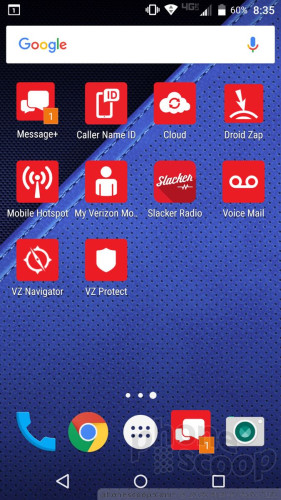
There are new fewer than 22 junk apps on board the M2, Verizon jammed an unforgivable amount of bloatware onto the M2, and most of it cannot be deleted (nor even hidden). Four games consume a staggering 300MB of storage. As it so happens, these are the only four pre-loaded apps that can be fully deleted. For shame, Verizon.
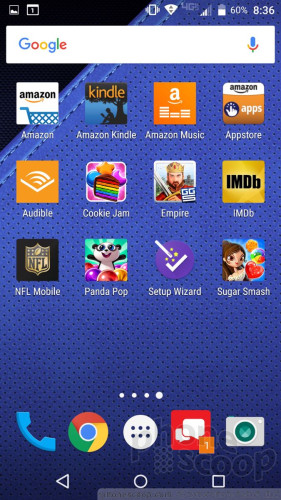


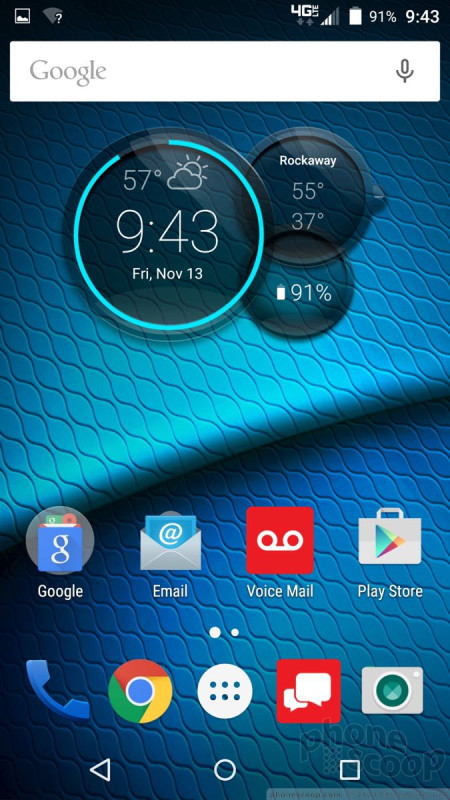









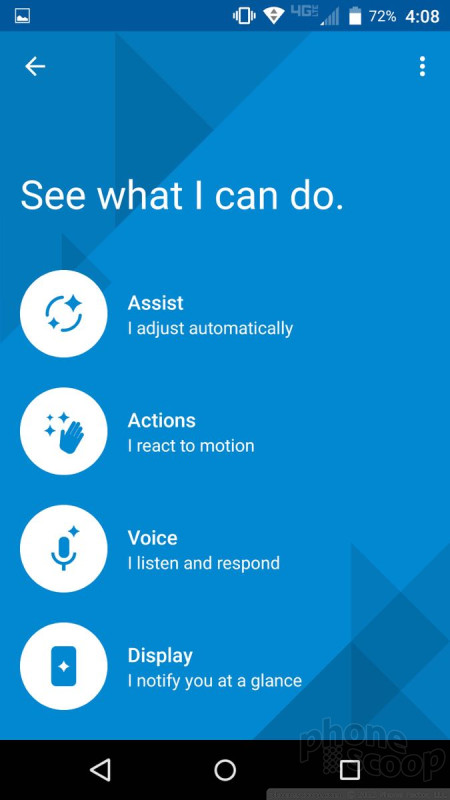







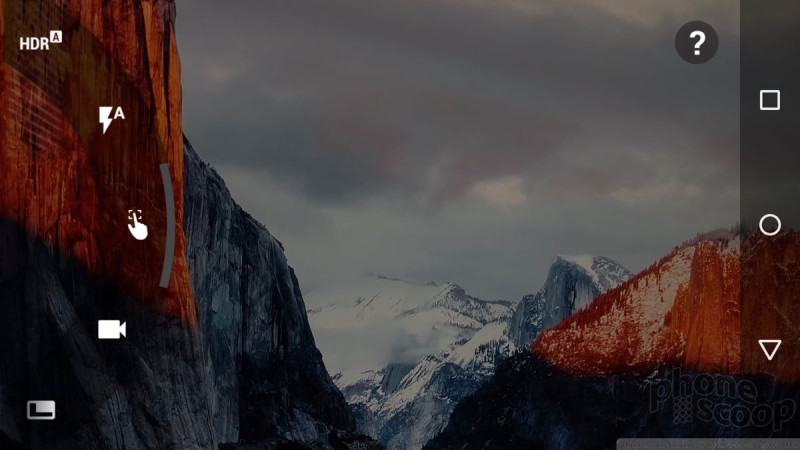

















 Hands On with the Motorola Droid Maxx 2 for Verizon
Hands On with the Motorola Droid Maxx 2 for Verizon
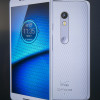 Droid Maxx 2 Boasts 2-Day Battery Life
Droid Maxx 2 Boasts 2-Day Battery Life
 Samsung Refreshes Galaxy S Series with S Pen, New Cameras
Samsung Refreshes Galaxy S Series with S Pen, New Cameras
 iPhone 14 Plus Offers a Big Screen For Less
iPhone 14 Plus Offers a Big Screen For Less
 Motorola Brings More Affordable 5G Phones to its 2024 Lineup
Motorola Brings More Affordable 5G Phones to its 2024 Lineup
 Motorola Droid Maxx 2
Motorola Droid Maxx 2




